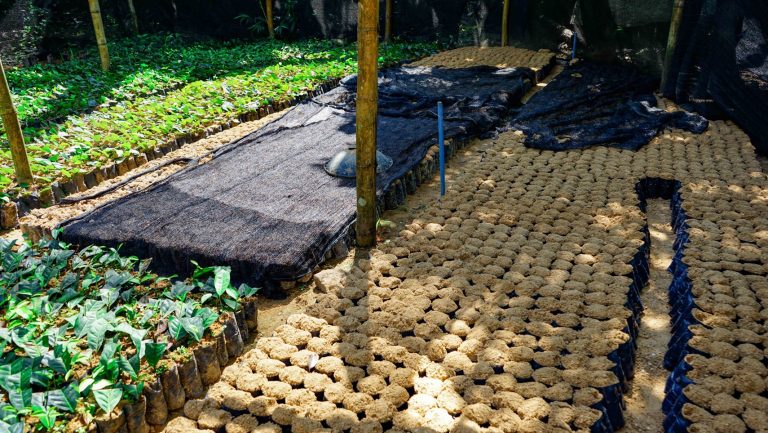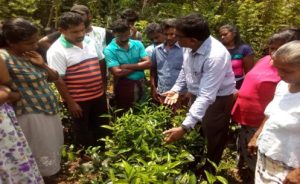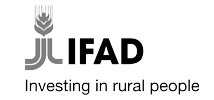Increased Livelihood Standards through Tea Sector on Farm Development
Total Project Cost
RSb149.76 Mn
Locations of the Project
Kandy, Galle, Matara
Number of Beneficiaries
537


Background of the Proposed Project
Tea production is one of the main sources of foreign exchange for Sri Lanka (formerly called Ceylon), and accounts for 2% of GDP, contributing over US $1.5 billion in 2013 to the economy of Sri Lanka.[1] It employs, directly or indirectly, over 1 million people, and in 1995 directly employed 215,338 on tea plantations and estates. In addition, tea planting by smallholders is the source of employment for thousands whilst it is also the main form of livelihoods for tens and thousands of families. Sri Lanka is the world's fourth-largest producer of tea. In 1995, it was the world's leading exporter of tea (rather than producer), with 23% of the total world export, but it has since been surpassed by Kenya. The highest production of 340 million kg was recorded in 2013, while the production in 2014 was slightly reduced to 338 million kg. The major tea growing areas are in Central Province, Uva Province ,Southern Province, and Sabaragamuwa Province. Central Province is famous for High-grown tea, where the first tea plantations were established. UvaProvince,Southern/Sabaragamuwa Provinces famous for Mid-grown and Low-grown teas respectively. Low-grown tea mainly originates from southern Sri Lanka. These teas are grown from sea level to 2,000 ft (610 m), and thrive in fertile soils and warm conditions.[36] These areas are spread across four main sub-districts ,Ratnapura/Balangoda, Deniyaya, Matara, and Galle. Low-grown tea is stronger and less-subtle in taste and is produced in Galle, Matara and Ratnapura areas. Inadequate liquidity position to mitigate the risk of low auction prices on Tea by increasing revenues from Local tea sales and Fertilizer sales.
Project Focus
To enhance mid grown tea output of tea small holders specifically out growers supplying for Kalubowitiyana Group.
Project Goals
Increase access to finance capabilities of tea small holder increasing profits of the business over 20% Increase the yield of the tea small holder by 20%p.a.
Project Objectives
- To grant facilities totaling to Rs. 110,435 million for 537 tea small holders in Kalubowitiyana
- To enhance the tea output of the participated tea small holder by 20 %.
- Enhance savings habits by 10% by introducing compulsory saving mechanisms
Investment Plan

Social Impact
• Tea small holder will continue to have increase output over 15 years.
• Positive impact on foreign reserves of the country.
• Increased living standard of the farmer.
Sustainability
It is evident that high financial cost leads tea small holder to struggle, constraining to the current production levels. SAPP Program model provides solutions assisting farmer to increase tea output accessing low cost funds. For an example, assistance provided for replanting/new planting will continue to generate sustainable income levels over 15 years stabilizing income levels even to raise funds at current market rates. This will further enhance productivity levels enabling themselves to invest in innovative technology.
SAPP Regional Offices
UVA Province
Regional Project Coordinator
Tel: 071 446 06 85
Email: [email protected]
Address: SAPP Regional Office, Department of Agrarian Development, Keppitipola Mawatha, Badulla
Southern & Western Province
Regional Project Coordinator
Tel: 077 375 08 81
Email : [email protected]
Address: Smallholder Agribusiness Partnership Programme, No. 212/A, Nawala Road, Rajagiriya.
North Western Province
Email: [email protected]
Address: SAPP Regional Office, Provincial Department of Agriculture, Dambulla Road, Kurunegala.
North Central Province
Tel: 077 376 00 28
Email: [email protected]
Address: SAPP Regional Office,Provincial Department of Agriculture,2nd Floor, Kada 12, Anuradhapura
Central & Sabaragamuwa Province
Address: SAPP Regional Office, Department of Animal Production & Health, No.13, Peradeniya.


